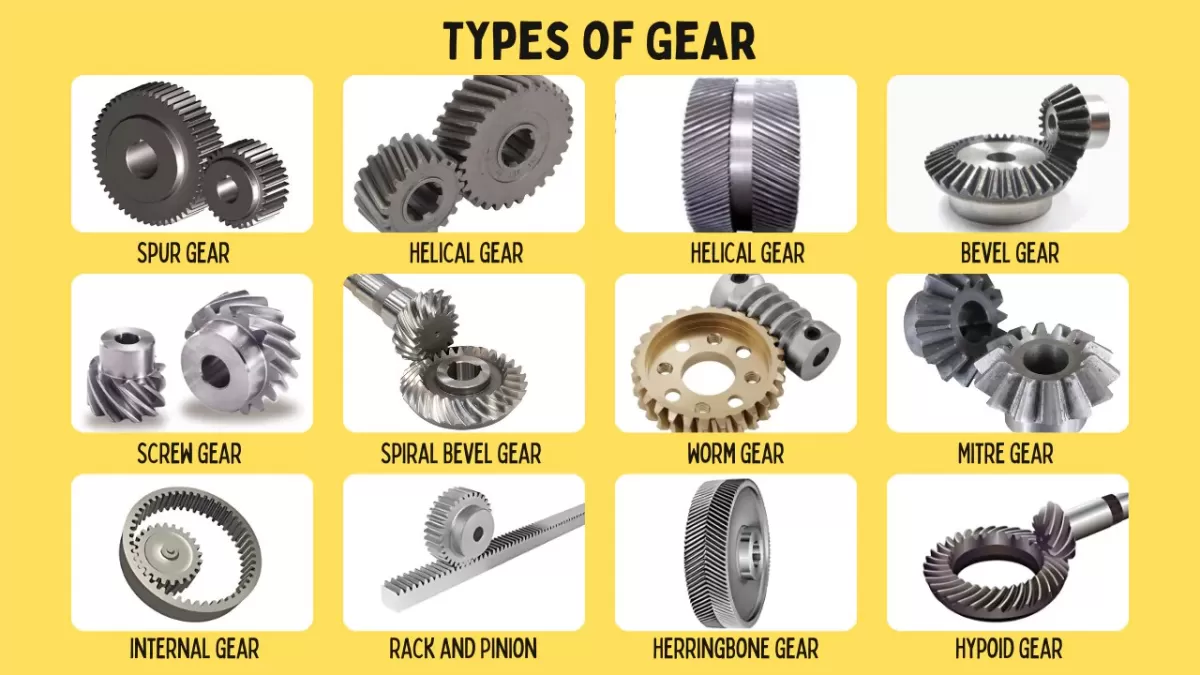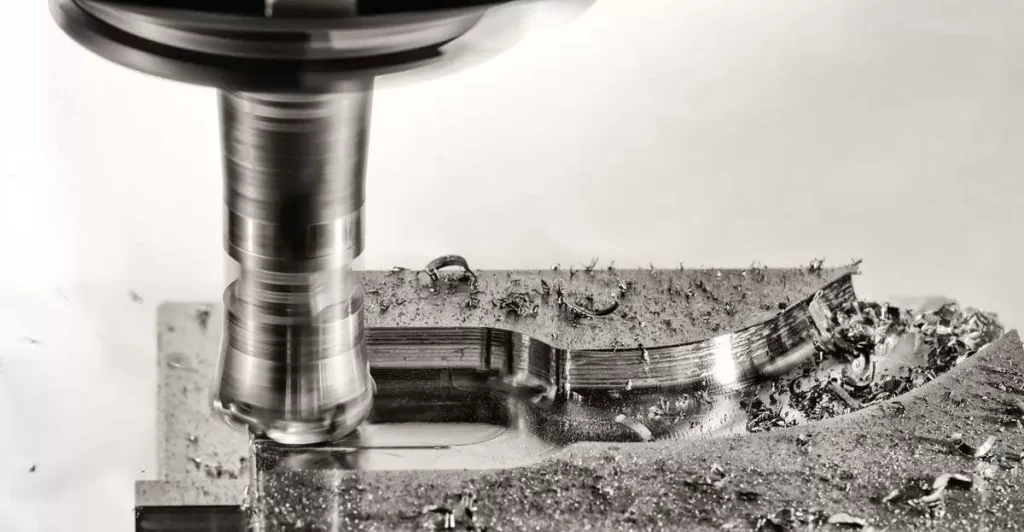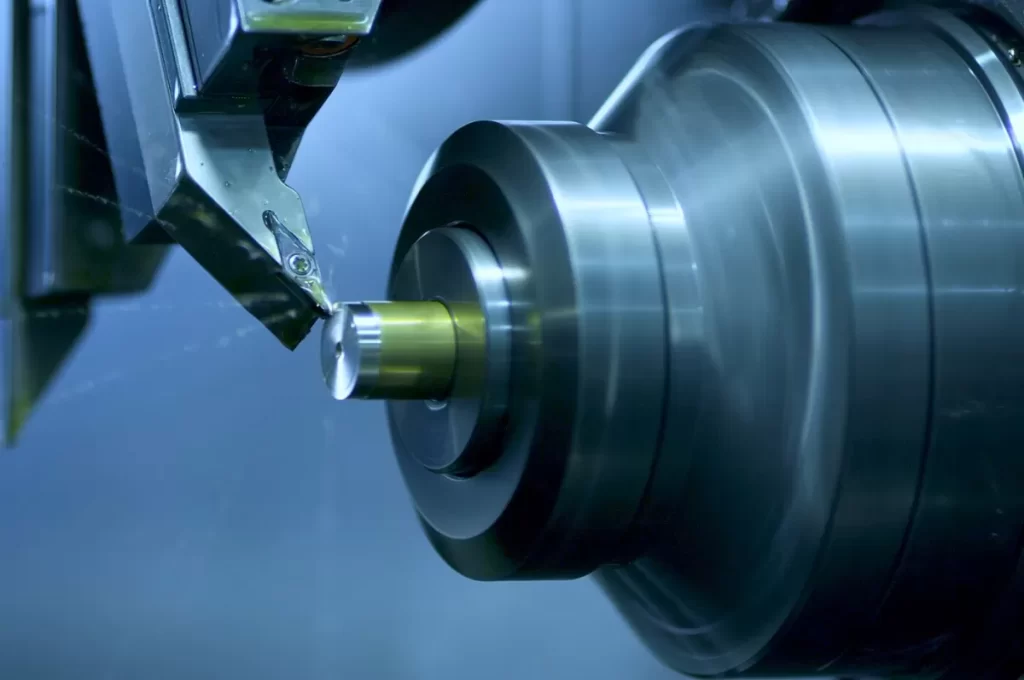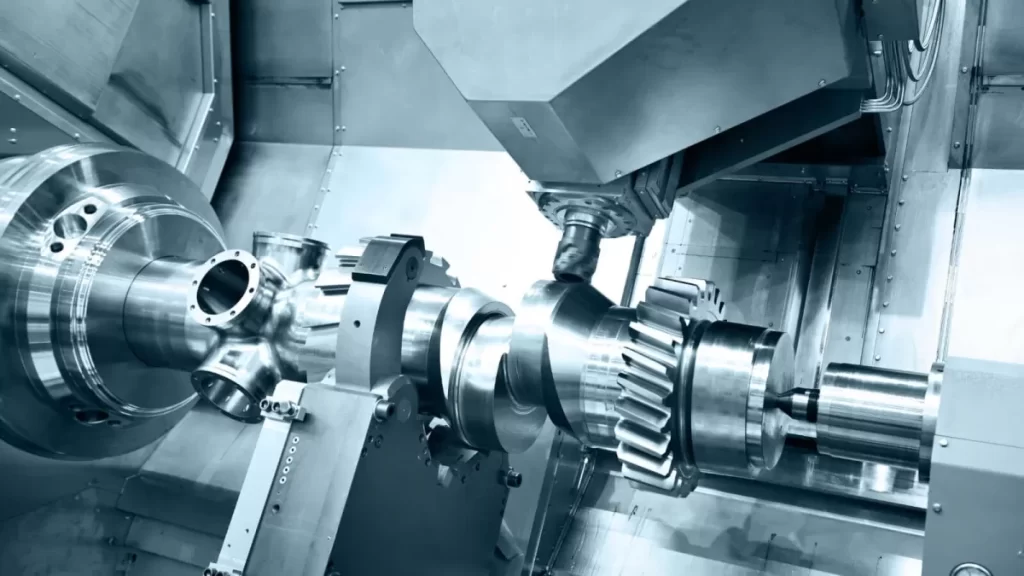Are you searching for the right types of gears for your next project? Choosing the perfect gear can transform your machinery’s performance, efficiency, and durability. As experts in precision CNC machining, we at HYCNC understand the critical role gears play in industries like automotive, aerospace, and robotics. In this guide, you’ll discover the different types of gears, their unique traits, and how to select the best one for your needs. From spur gears to planetary gears, we’ve got you covered with practical insights and expert tips. Let’s dive into the world of gears!
What Are Gears and Why Are They Important
Gears are mechanical components with teeth that mesh together to transmit power and motion between rotating shafts. They play a crucial role in controlling speed, torque, and direction in countless machines and devices.
In industries like automotive, aerospace, manufacturing, and robotics, gears ensure smooth and efficient operation by enabling precise movement and power transfer. Their ability to adjust force and speed makes them essential in everything from car transmissions to factory equipment.
Choosing the right gear type is critical. The right gear improves performance, reduces wear and tear, lowers noise, and enhances overall efficiency. Using the wrong gear can lead to premature failure, increased costs, and operational downtime.
Understanding gears and their specific benefits helps you select the best solution for your application, ensuring reliability and long-term success.
Common Types of Gears and Their Characteristics
Spur Gears
Spur gears are the most basic gear type, with straight teeth mounted on parallel shafts.
Advantages: Simple to manufacture, cost-effective, and efficient for moderate speeds.
Disadvantages: Noisy at high speeds, less smooth operation compared to others.
Applications: Used in clocks, washing machines, and conveyors.
Helical Gears
Helical gears have angled teeth that engage more gradually than spur gears.
Advantages: Quieter and smoother operation, can handle higher loads.
Disadvantages: More complex and expensive to produce, generate axial thrust.
Applications: Common in automotive transmissions and industrial machinery.
Bevel Gears
Bevel gears are conical gears used to transmit motion between intersecting shafts, usually at 90 degrees.
Types: Straight bevel, spiral bevel, and Zerol bevel.
Advantages: Efficient for changing shaft direction, good torque handling.
Disadvantages: Can be noisy, and more difficult to align correctly.
Applications: Used in differential drives, hand drills, and marine equipment.
Worm Gears
Worm gears consist of a screw-like worm meshing with a worm wheel.
Advantages: High reduction ratios in a compact space, can provide self-locking features.
Disadvantages: Lower efficiency due to sliding contact, generate heat.
Applications: Elevators, conveyors, and tuning instruments.
Rack and Pinion Gears
Rack and pinion gears convert rotational motion into linear motion. The pinion is the round gear, the rack is the linear gear.
Advantages: Simple design, precise linear motion control.
Disadvantages: Limited to linear travel distance, wear over time on the rack.
Applications: Steering systems in cars, CNC machines, and railways.
Planetary Gears
Planetary gears include a central sun gear, multiple planet gears, and an outer ring gear.
Advantages: Compact design, high torque transmission, multiple gear ratios.
Disadvantages: Complex design and manufacturing, higher cost.
Applications: Automatic transmissions, robotics, and wind turbines.
Hypoid Gears
Hypoid gears are similar to bevel gears but shafts don’t intersect, allowing offset axes.
Advantages: Quiet operation, high torque capacity, better gear mesh.
Disadvantages: More expensive, require precise alignment.
Applications: Rear axles of cars, heavy machinery.
Internal Gears
Internal gears have teeth cut on the inside of a cylinder and mesh with smaller external gears.
Advantages: Compact, can transmit high torque, reduces space.
Applications: Planetary gear systems, robotics, and instrumentation.
Each gear type offers different pros and cons, so choosing the right one depends heavily on your project’s specific needs, including noise levels, space, and power transmission requirements.
How to Choose the Right Gear Type for Your Application
Picking the right gear type is crucial to getting the best performance and durability for your project. Here’s what you need to keep in mind:
Shaft Orientation
- Some gears work better when shafts are parallel (like spur and helical gears)
- Others handle angled or perpendicular shafts (like bevel and hypoid gears)
Load and Torque
- High torque applications often need stronger gears like worm or planetary gears
- Lighter loads can get away with spur or rack and pinion
Speed and Efficiency
- Helical and planetary gears are great for smooth and efficient high-speed use
- Worm gears tend to lose more power due to friction, so they’re less efficient
Space and Noise
- Space constraints might push you towards compact planetary or hypoid gears
- If noise is an issue, helical gears are quieter than spur gears
Material Selection
- Metal gears (steel, brass) offer strength and durability for heavy use
- Plastic gears may be fine for light loads and help reduce noise and weight
Precision and Manufacturing Quality
- Accurate gear manufacturing is key, especially in gear types requiring tight tolerances like planetary or hypoid gears
- CNC machining plays a big role here, ensuring gears meet your exact specs
Considering these factors will help you zero in on the gear type that matches your application’s specific needs, saving time, money, and headaches down the road.
Gear Manufacturing The Role of CNC Machining
Manufacturing gears requires precision, durability, and consistent quality. Traditional gear-making involves cutting, casting, or forging, but CNC machining has become the go-to method for producing high-quality gears efficiently. CNC (Computer Numerical Control) machining uses automated computer controls to shape gears from metal or plastic with exact specifications.
The benefits of CNC machining for gears include tight tolerances, repeatability, and the ability to handle complex designs. This precision reduces errors and waste, saving time and costs. CNC also supports quick adjustments in production, which is crucial for meeting customized gear requirements in industries like automotive, aerospace, and robotics.
At HYCNC, we use advanced CNC technology that allows us to work with a wide range of materials—from steel and aluminum to high-grade plastics. Our machines support multiple surface treatments, such as heat treating and coating, enhancing gear performance and longevity.
For example, one of our recent projects involved producing a batch of helical gears for an automotive supplier. Using CNC machining, we achieved exact tooth profiles and smoother finishes, which improved gear efficiency and reduced noise in the final product.
By combining modern CNC machining with expert craftsmanship, HYCNC ensures gears meet the highest standards required by today’s demanding applications. This process guarantees reliability and performance, essential for your gears to run smoothly and last longer.
For more details on related components, check out our guide on types of bearings.
Applications of Gears Across Industries
Gears play a crucial role in many industries, helping machines run smoothly and efficiently. Here’s how gears are used across different sectors:
Automotive
Gears are essential for cars and trucks—transmissions, differentials, and steering systems all rely on various gear types like planetary, helical, and hypoid gears. They help control speed, torque, and direction, improving vehicle performance and fuel efficiency.
Aerospace
In aerospace, gears need to be precise and durable. They’re used in engines, landing gear systems, and flight control mechanisms. High-quality gear manufacturing ensures safety and reliability in extreme conditions.
Manufacturing
Manufacturing machines depend heavily on gears for automation and power transmission. Spur and bevel gears are common in conveyor belts, presses, and machining tools, providing accurate motion and consistent force.
Robotics
Robots require compact, efficient gears like planetary and worm gears to control movement with precision. These gears support flexibility, speed control, and the smooth operation of robotic arms and joints.
Consumer Goods
From household appliances like washing machines and mixers to power tools, gears make everyday devices work efficiently. Rack and pinion gears often handle smooth linear motion in products like adjustable chairs or printers.
Understanding how each gear type serves different industries helps you choose the best gear for your specific needs, whether it’s for heavy-duty manufacturing or delicate robotic applications.
For more on related components, check out our guide on types of bearings to complement your gear knowledge.
Tips for Designing and Maintaining Gears
Getting your gear design right from the start makes a big difference in performance and longevity. Here are some solid design tips to keep in mind:
- Match gear type to application: Choose gears based on load, speed, and space requirements.
- Focus on tooth profile: Proper tooth shape helps reduce noise and wear.
- Consider material choice: Use materials that suit your environment and expected stress, like hardened steel or specialty alloys.
- Plan for lubrication: Good lubrication extends gear life and avoids overheating.
- Account for manufacturing tolerances: Precision matters, so work closely with your CNC service provider.
When it comes to maintenance, a few simple steps can save you headaches down the road:
- Regular inspection: Check for wear, pitting, or misalignment frequently.
- Keep gears clean and lubricated: Dirt and grime speed up wear.
- Monitor noise and vibration: Changes often signal trouble.
- Replace damaged gears early: Don’t wait for failure, it can harm the whole system.
At HYCNC, we support your gear projects through every step. Our advanced CNC machining services include CAD integration and Finite Element Analysis (FEA) support, helping you fine-tune designs before production. This way, you get precise, durable gears optimized for your needs and US market demands.
For more on precision parts, check out our guide on types of bearings to complement your gear systems.




